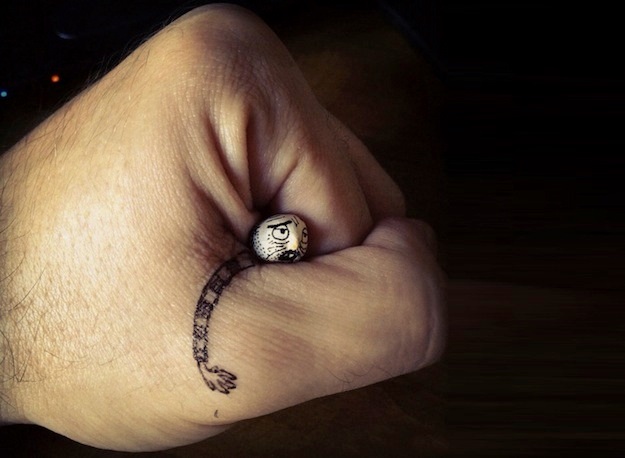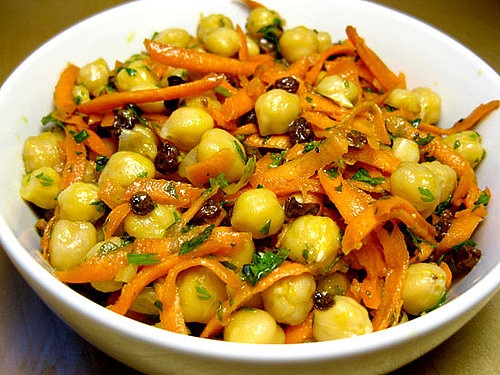Main Name: Chickpea
Biological Name: Cicer arietinum
Names in other languages: Granos de garbanzo (Spanish), Des pois chiches (French), Chana, Kabuli Chana (Hindi), Kothu kadalai (Tamil), Kadala (Malayalam), Sanagalu (Telugu), Chana (Gujarati), Chola (Bengali), Harbara (Marathi), Buta (Oriya), Chole (Punjabi), Chana sabut (Urdu)
Biological Name: Cicer arietinum
Names in other languages: Granos de garbanzo (Spanish), Des pois chiches (French), Chana, Kabuli Chana (Hindi), Kothu kadalai (Tamil), Kadala (Malayalam), Sanagalu (Telugu), Chana (Gujarati), Chola (Bengali), Harbara (Marathi), Buta (Oriya), Chole (Punjabi), Chana sabut (Urdu)
Ever tried those brown-colored fried balls with a green stuffing served at a Middle Eastern restaurant? Well, for those of you who aren’t aware of what these patties are known as, it’s falafel that they are famous as. And to add to your curiosity to grab a few of them, the basic ingredient of falafel is chickpeas. Yes, the large, white-colored chickpeas that most of you savor either in the canned version or in curries, form the base of preparing not just falafel but another popular Middle Eastern dip called hummus, often served with pita bread as an appetizer. That’s just two of the myriad of recipes that chickpeas go into. Their use extends to the preparation of several scrumptious delicacies in most cuisines of the world. Also known as garbanzo beans, chi-chi beans, Bengal grams, and Egyptian peas, chickpeas are a part of the diverse legume family. Along with lentils and peas, they are a part of the protein food group. There are two types of chickpeas – the smaller, darker, and roughly coated Desi variety, and the larger, lighter colored, and smoothly coated Kabuli version. They are such versatile and wholesome leguminous pulses that you can make almost anything out of them – the renowned falafel, hummus dips, veggie burgers, bread, including additions to stews, curries, salads… the list continues. And if that is not enough to attract you towards treating yourself with a serving of chickpeas, they have several nutritional advantages. Here, you will find some healthy benefits of chickpeas.
History
A staple of Middle Eastern, African, and Indian cuisines, chickpeas are believed to be one of the oldest cultivated beans, dating as far as 5,400 BC. The first record of consuming chickpeas can be traced back to about seven thousand years back. They were first cultivated in the Mediterranean basin around 3000 BC amongst Egyptians, Greeks, and Romans and were then introduced to other subtropical regions by the Spanish and Portuguese explorers in the 16th century. Gradually, the Indians who had immigrated to other countries brought back chickpeas and integrated them into their cuisines. Today, India is the largest producer of chickpeas, supplying around 80 to 90 percent of the world’s production. Other commercial producers include Pakistan, Turkey, Ethiopia, and Mexico.
A staple of Middle Eastern, African, and Indian cuisines, chickpeas are believed to be one of the oldest cultivated beans, dating as far as 5,400 BC. The first record of consuming chickpeas can be traced back to about seven thousand years back. They were first cultivated in the Mediterranean basin around 3000 BC amongst Egyptians, Greeks, and Romans and were then introduced to other subtropical regions by the Spanish and Portuguese explorers in the 16th century. Gradually, the Indians who had immigrated to other countries brought back chickpeas and integrated them into their cuisines. Today, India is the largest producer of chickpeas, supplying around 80 to 90 percent of the world’s production. Other commercial producers include Pakistan, Turkey, Ethiopia, and Mexico.

http://gonnabeawesome.com/mr-chickpea-and-friends-by-sadi-tekin/
Health Benefits of Chickpeas
- Rich in both types of fiber, soluble and insoluble, chickpeas escort the trapped bile acids out of the body and lower cholesterol levels, thereby contributing to cardiovascular health.
- The insoluble fiber content in chickpeas helps in preventing digestive disorders, like irritable bowel syndrome and diverticulosis; hence, promoting positive digestive health.
- With folate and magnesium in high amounts, chickpeas protect the body from cardiovascular diseases. Folate reduces the levels of the amino acid, homocysteine which causes damage to the lining of arteries and increases the risk of blood vessel blockages.
- With a rich supply of soluble fiber, chickpeas help in balancing blood sugar levels; thus, providing support to diabetic patients suffering from highs and lows of blood sugar levels.
- The high fiber content in chickpeas induces feelings of satiety, thereby cutting down the intake of unwanted calories and keeping your appetite under control.
- An excellent source of the trace mineral manganese, chickpea boosts production of energy and defends against several diseases.
- Molybdenum is a mineral and an antioxidant important for stimulating the body’s mechanism for reducing symptoms of energy, helping with impotency in men, fighting against tooth decay and irritability, and preventing anemia. Molybdenum is found in chickpeas in abundance.
- Chickpeas contain phytochemicals called saponins which are highly beneficial for the health of women. They act as antioxidants, providing protection against osteoporosis, lowering the risk of breast cancer, and minimizing hot flushes in post menopausal women.
- Chickpeas help in meeting your daily iron requirements. The deficiency of which reduces the delivery of oxygen throughout the body, resulting in feelings of weakness and tiredness, difficulties in concentration, and increasing the risk of infections.
- A good source of iron, chickpeas also help with the proper functioning of the human system and preventing conditions, like anemia, weakness, hair loss, headaches, and other critical health concerns.
- Regular consumption of folate is important for the production and maintenance of new cells, particularly during periods of rapid growth, like during pregnancy and infancy. Women, who consume adequate amounts of folate during their childbearing years, can reduce their risk of delivering babies with a neutral tube defect.
- Enriched with the amino acid tryptophan, chickpeas are a good source of serotonin which regulates fluctuating moods and sleeping disorders. Eating chickpeas before bedtime leads to calmness and induces a good night’s sleep.
Chickpea Nutrition FactsAmount: 1 cup
Total Weight: 200 g
Total Weight: 200 g
| Nutrients | Amount |
| Basic Components | |
| Proteins | 39 g |
| Water | 23.1 g |
| Ash | 5 g |
| Phytosterols | 70 mg |
| Calories | |
| Total Calories | 728 |
| Calories From Carbohydrate | 494 |
| Calories From Fat | 101 |
| Calories From Protein | 134 |
| Carbohydrates | |
| Total Carbohydrates | 121 g |
| Dietary Fiber | 35 g |
| Sugar | 21 g |
| Fats & Fatty Acids | |
| Total Fat | 12 g |
| Saturated Fat | 1.3 g |
| Monounsaturated Fat | 2.7 g |
| Polyunsaturated Fat | 5.4 g |
| Omega-3 Fatty Acids | 202 mg |
| Omega-6 Fatty Acids | 5.2 g |
| Vitamins | |
| Vitamin A | 134 IU |
| Vitamin C | 8 mg |
| Vitamin E | 1.6 mg |
| Vitamin K | 18 mcg |
| Thiamin | 0.95 mg |
| Riboflavin | 424 mcg |
| Niacin | 3.1 mg |
| Vitamin B6 | 1.1 mg |
| Folate | 1.1 mg |
| Pantothenic Acid | 3.2 mg |
| Choline | 190 mg |
| Minerals | |
| Calcium | 210 mg |
| Iron | 12 mg |
| Magnesium | 230 mg |
| Phosphorus | 732 mg |
| Potassium | 1.8 g |
| Sodium | 48 mg |
| Zinc | 6.9 mg |
| Copper | 1.7 mg |
| Manganese | 4.4 mg |
| Selenium | 16 mcg |

http://www.popsugar.com/fitness/Recipe-Chickpea-Carrot-Currant-Salad-3173518
How many calories in chickpeas (per 100 gm)
Chickpeas have about 364 calories per 100 gm of weight.
Chickpeas have about 364 calories per 100 gm of weight.
How to Buy Chickpeas
- Chickpeas are available in both dried and canned versions. While buying dried chickpeas, whether in bags or bulk, look for beans that are firm, dry, evenly colored, and uniformly sized.
- Always check for cracks or pinhole-sized marks that are an indication of insect damage. Avoid buying such beans.
- You can find chickpeas in canned forms in most markets and grocery stores. Although they must have lost most of the nutritional value, the key nutrients will still be intact.
Chickpea Storage Tips
- Dried chickpeas can be stored in an airtight container in a cool, dry, dark place where they can last for up to twelve months.
- Make sure that the chickpeas are protected from moisture and pests which can alter their quality.
- If you happen to purchase chickpeas at different times in different lots, do not combine them together since they require different cooking times due to the varying stages of dryness.
- Prepared chickpeas should be placed in a covered container in the refrigerator to retain their freshness. This way, they will last for about three to four days.
- Store canned chickpeas at room temperature and use before the expiry date stamped on the can.

